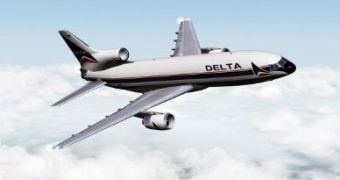Those planning on traveling from Europe to North America by plane in the not so distant future would do best to ready themselves for a seriously bumpy flight.
This is because, as climate change and global warming continue to toy with our planet's natural balance, said traveling corridor will only get shakier.
The University of Reading and the University of East Anglia researchers now saying that climate change and global warming are bound to also influence the future of aviation explain that the aforementioned phenomena will sooner or later cause the air currents which form the traveling corridor between Europe and North America to destabilize.
This will in turn translate into the planes' flying through this corridor coming face to face with increased atmospheric turbulence, International Business Times reports.
According to the researchers' estimations, the flights between Europe and North America will get significantly bumpier by the year 2050.
Interestingly enough, it appears that, since 1958 and up until present day, the clear-air turbulence reported in said flight corridor across the Atlantic has increased by 40-90% as compared to pre-1958 levels.
“Clear-air turbulence changes significantly within the transatlantic flight corridor when the concentration of carbon dioxide in the atmosphere is doubled,” reads the study published by Paul D. Williams and Manoj M. Joshi in the scientific journal Nature Climate Change.
“At cruise altitudes within 50–75° N and 10–60° W in winter, most clear-air turbulence measures show a 10–40% increase in the median strength of turbulence and a 40–170% increase in the frequency of occurrence of moderate-or-greater turbulence,” the researchers go on to argue.
Despite their rather gloomy predictions concerning how climate change will affect the future of the aviation industry, the researchers wish to stress the fact that the increase in the sensation of turbulence experienced by the passengers will be smaller than the actual increase in the corridor's clear-air turbulence.
This research is considered to be the first to investigate the way in which climate change will transform the experience of flying between Europe and North America.

 14 DAY TRIAL //
14 DAY TRIAL //